All About Load Bearing Wall Construction | How to Tell If a Wall Is Load Bearing | Load Bearing Beam | Non-Load Bearing Wall | Non-Load Bearing Wall Framing
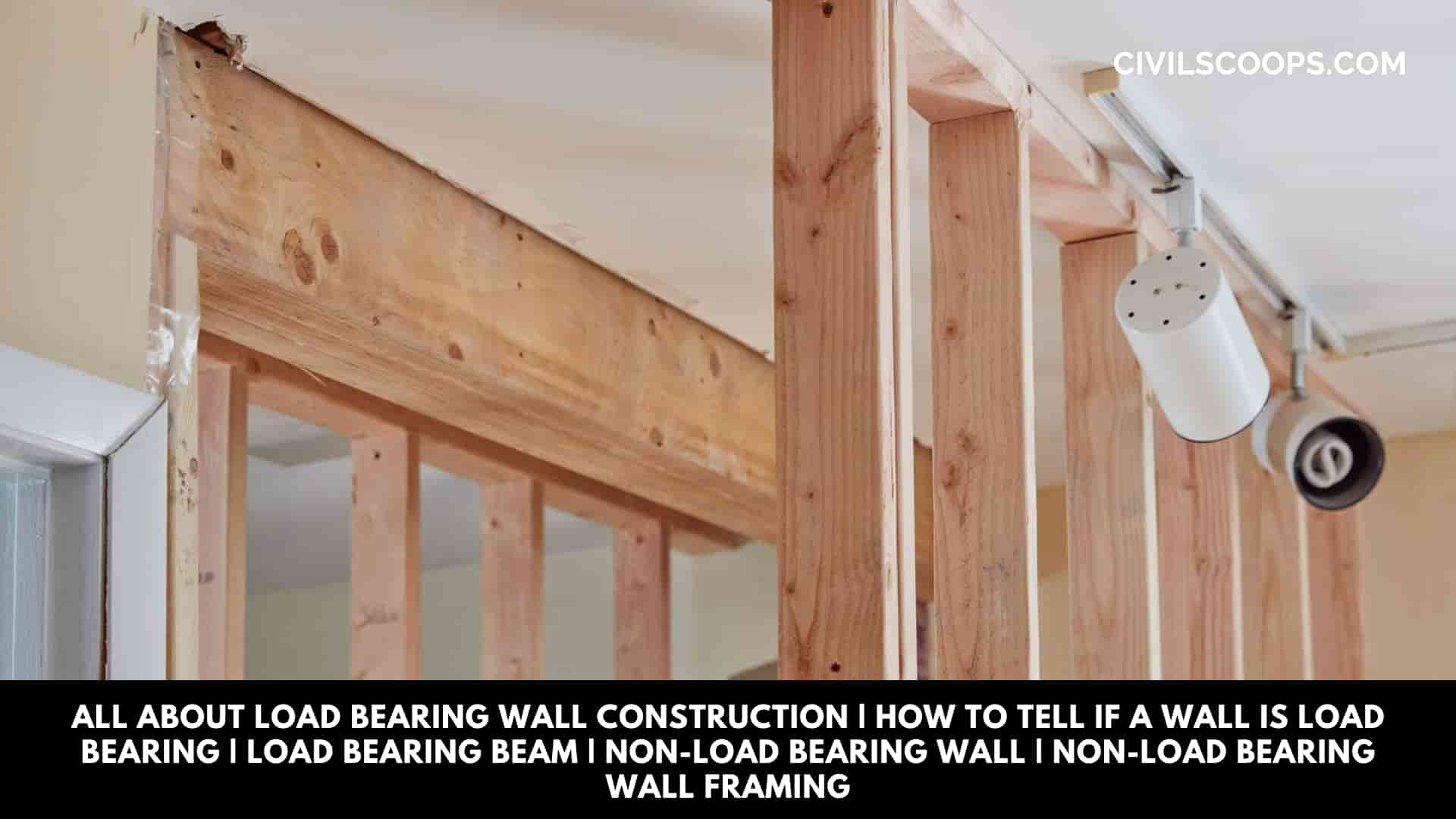
Table of Contents
Load Bearing Wall Construction:
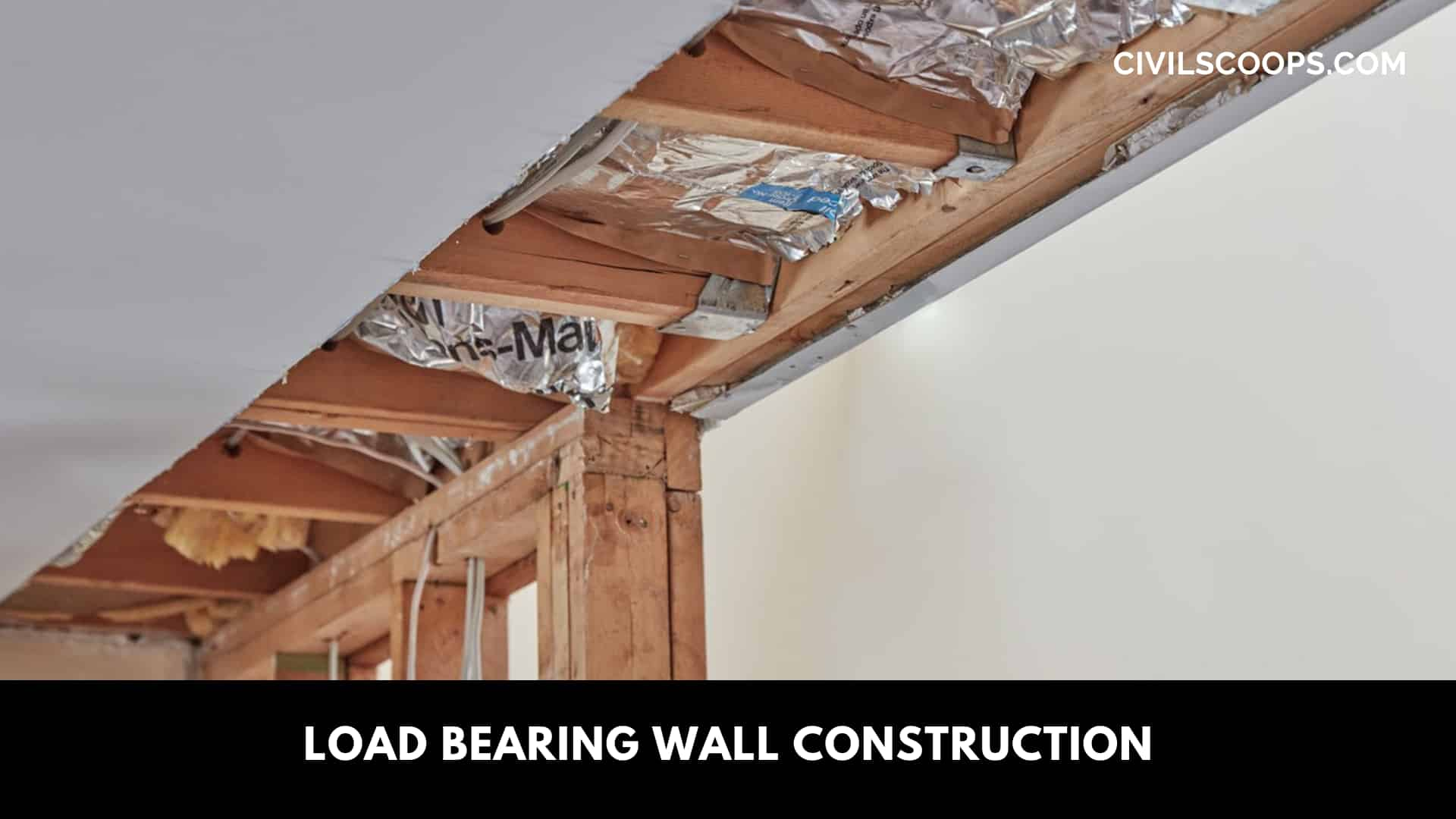
Load Bearing Wall Construction was most widely used form of construction for large buildings from the 1700’s to the mid 1900’s.
Load Bearing Wall Construction is rarely used today in large buildings, but smaller residential buildings are being built.
Load Bearing Wall Construction consists mainly of thick, heavy brick or stone walls that support the entire structure, including the horizontal floor slabs, which can be made of reinforced concrete, wood, or metal parts.
The key point about Load Bearing Wall Construction is that the entire wall acts as a load-bearing element.
In a Load Bearing Wall Construction, you can’t punch holes in the wall to connect two rooms or you could damage the building if you did.
The heavy weight of the walls actually helps to strengthen the structure and stabilize it against external forces such as wind and earthquakes.
In traditional European Load Bearing Wall Construction, the floor slabs were made of horizontal wooden beams, joists, and planks. A joist is a small wooden beam that rests on two large beams.
Also Read: Difference Between Beam and Column | What Is Beam | What Is Column
What Is Load Bearing Wall?
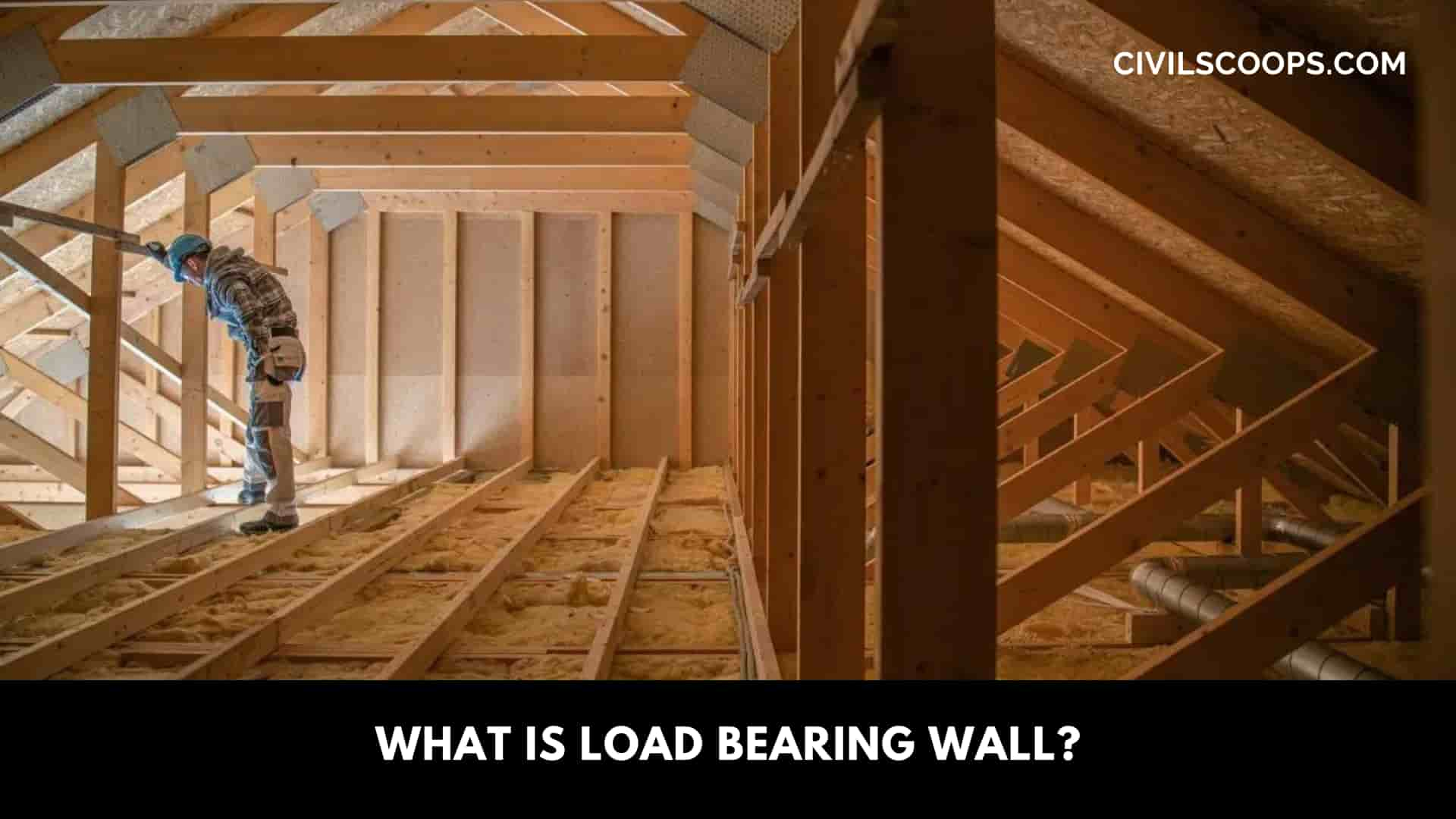
A load-bearing wall is a wall that is an active functional structure of a building, which carries the weight of the building above it, then transfers the total weight to the foundation structure beneath it.
Load-bearing walls are one of the first methods of construction. The construction of the flying buttress in Gothic architecture allowed the buildings to keep the interior open, transferring more weight to the buttresses instead of the central walls.
In housing, load-bearing walls are more commonly used in the light construction method known as “platform framing”.
The birth of the skyscraper era and the simultaneous growth of steel as a more suitable framing system, as well as the limitations of load-bearing construction on large buildings, led to a decline in the use of load-bearing walls in a large scale commercial structures.
A load-bearing wall is a functional structure of a building, which carries the weight of the material and structure above the said wall resting upon it by transferring its weight to the foundation structure.
The materials most commonly used to build load-bearing walls are concrete blocks or brick for large buildings.
In contrast, the curtain wall does not provide significant support for the structure beyond what is needed to carry its own materials or conduct such loads onto a load-bearing wall.
How to Tell If a Wall Is Load Bearing?

- While one should consult a professional architect, such as a carpenter, architect, or structural engineer, to ensure that the wall is Load Bearing or non Load Bearing, there are a number of indicators you can check for to get the initial answer. We can do this without removing the drywall or other destructive steps.
- A good place to start is to dig out the actual building plan if they are available. The original building plan will tell you which walls carry the load and which are not. If the wall is marked “S” in the building plan, this means “structure,” thus indicating that there is a load-bearing wall.
- Look at your roof to identify any beams that carry loads across the house. Any walls under these beams are probably also carrying the load. If there is no load-bearing beam under the wall that you can consider removing the wall as it may not be Load Bearing.
- Look in your building basement or crawl space for metal beams or joists. If you see joists in your basement and there is a wall that goes perpendicularly, then this wall may be Load Bearing. If the wall is situated parallel above the joints, it may not be a load-bearing wall.
Load Bearing Beam-
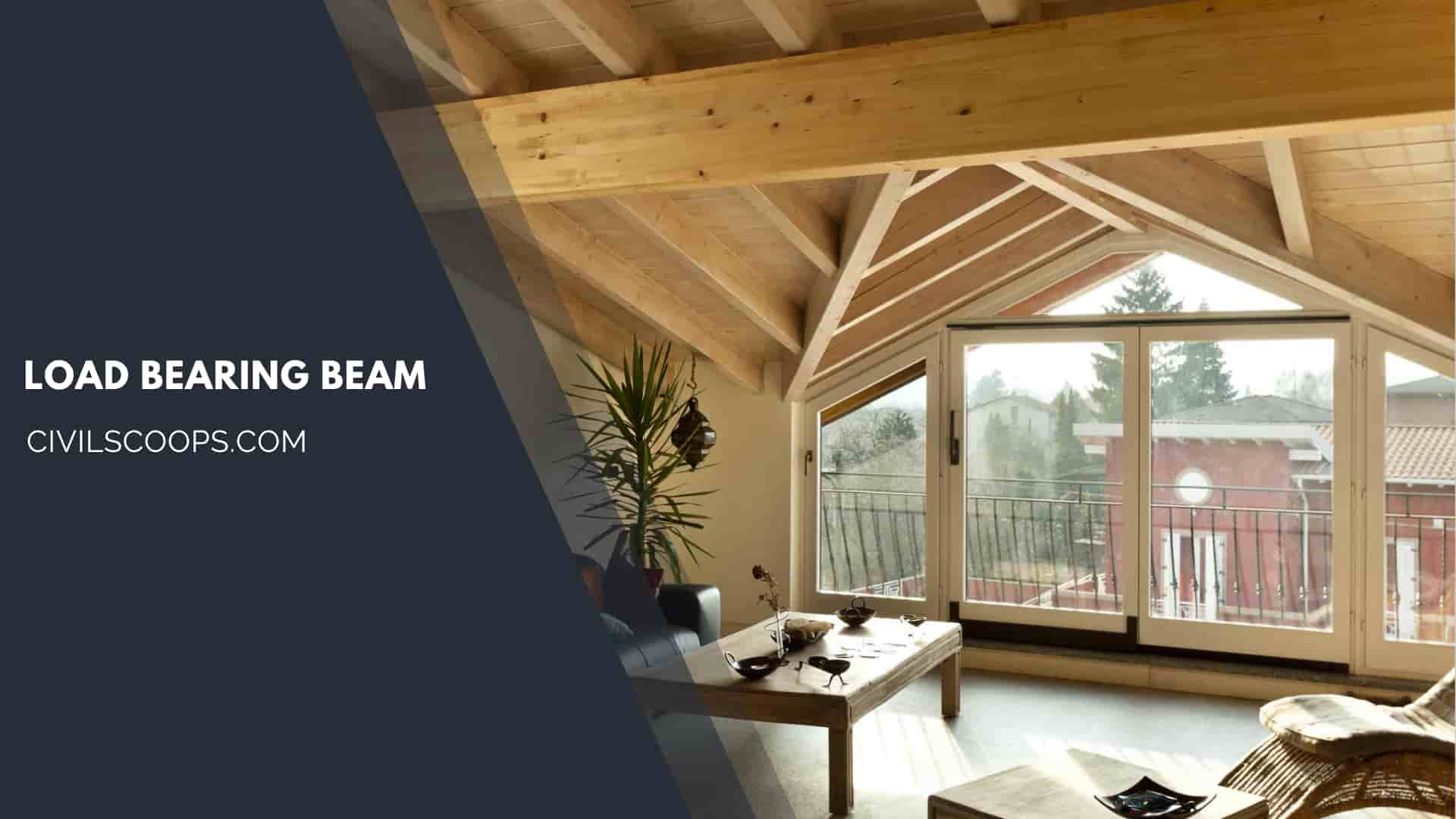
A good way to make small or narrow rooms large is to remove the wall between the adjoining rooms. When you replace a load-bearing wall with a load-bearing beam, you create a larger, more usable floor area and give your home a more spacious feel.
Load-bearing walls cannot be removed without installing a building system, such as a Load Bearing beam, to replace an existing wall.
Loose walls do not carry a load (weight of the building) above them and can usually be removed without worrying about cracking or caving of the house.
How Wide of an Opening Can You Have on a Load Bearing Wall?

- An opening you can have on a Load Bearing Wall should be six feet or less. This creates a carrying point 1.5 inches wide.
- Any open space more than six feet should have at least 2×4 no of beams under each edge of the floor.
- We cannot have wide openings on any load-bearing wall as it is not well supported. Proper support varies depending on the weight of the load, the base under which it is supported, and the materials used to support it.
- While constructing a building, one must need a civil engineer to inspect it and design that support.
Non-Load Bearing Wall-
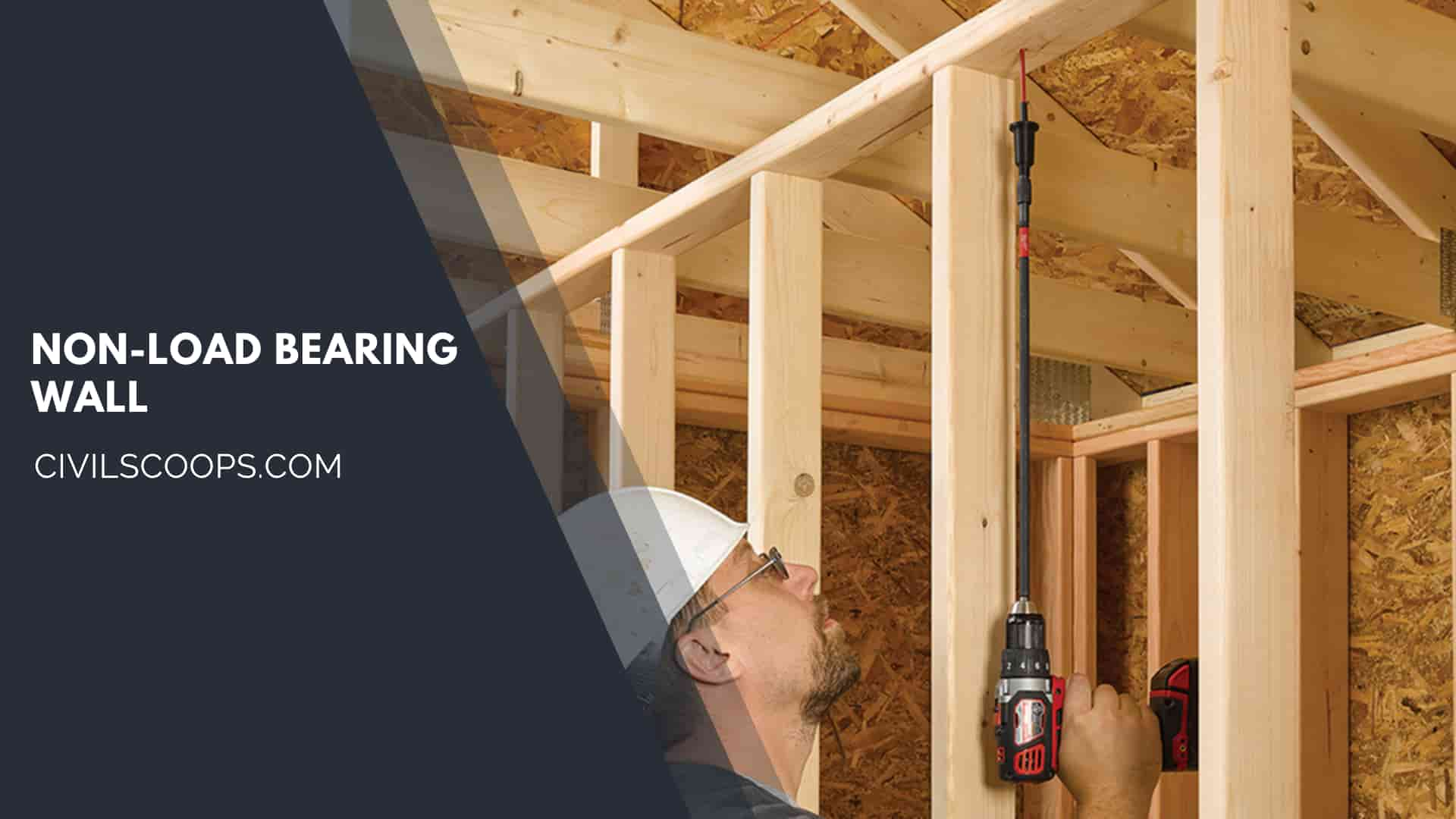
Load-free or Non-Load Bearing walls are installed inside the house and do not support any building weight. Non-Load Bearing Wall does not bear the additional weight of a building structure; they can only bear their own weight.
Non-Load Bearing Wall is used primarily as room dividers and in particular, do not serve any other purpose.
One can quickly distinguish Non-Load Bearing Wall by simply looking at the beams on their roof or in the basement. When joists and beams run parallel to a wall, they are often considered non load-bearing walls.
One can remove Non-Load Bearing Wall without compromising the safety of the building as they are not responsible for the support of gravity of your property.
It is always a good idea to take professional advice and guidance before proceeding with these actions.
Aside from the variety of private gardens, the Non-Load Bearing Wall appears only when loads are carried by other members, such as on heavy logs and other skeleton frames.
Modern steel and reinforced concrete frames require only the outer walls of the shelter and sometimes carry them down to allow easy access.
Since the wall rests on the members of the frame, it becomes a screen and admits treatment in any weatherproof material.
Traditional materials are commonly used, but simple walls of glass, plastic, alloys, wood products, etc., can work equally well. This freedom of choice even extends to the walls and offers the greatest opportunity for artistic expression.
Non-Load Bearing Wall Framing-
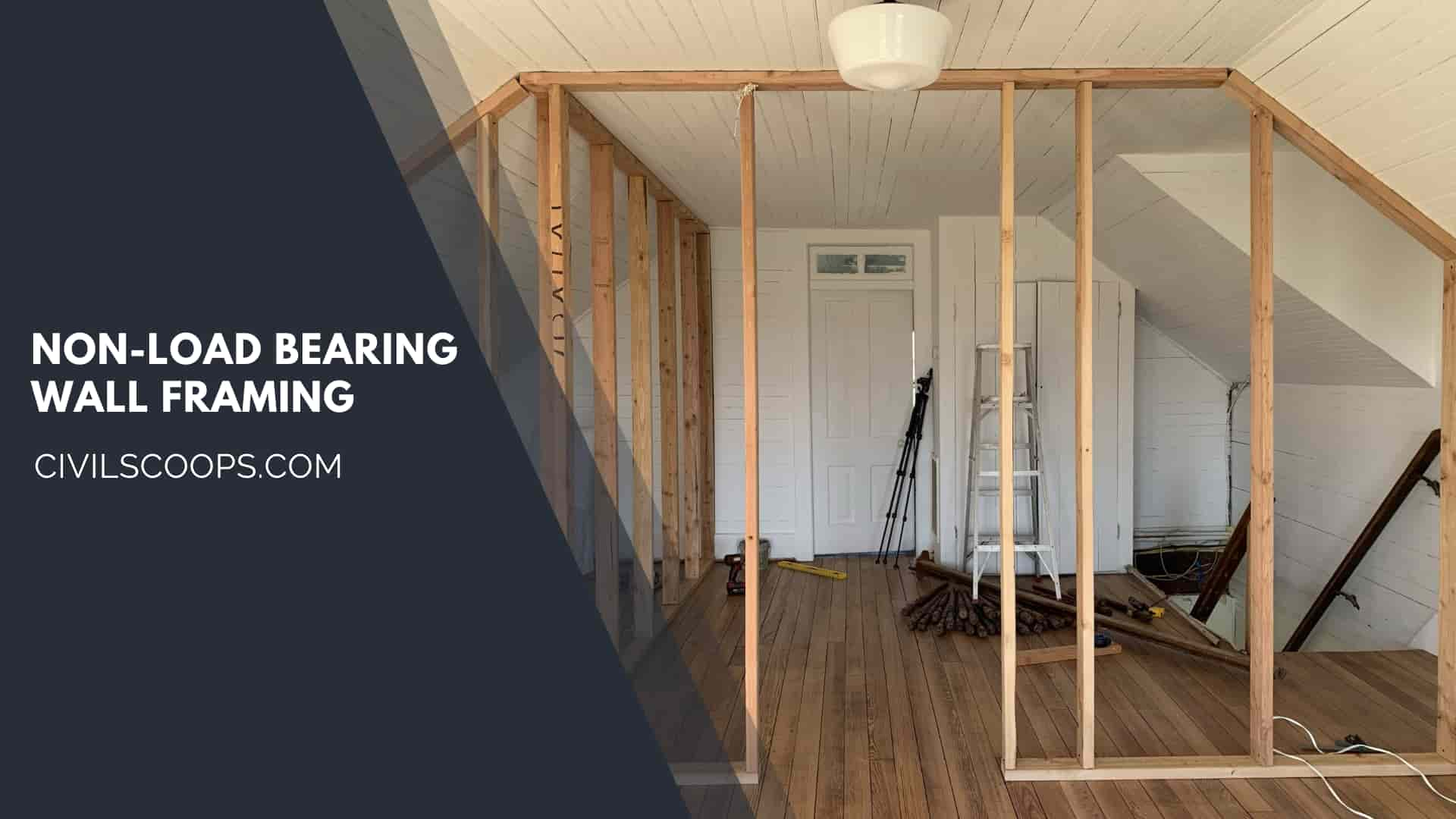
A wall that does not help the building to stand and hold itself is known as a Non-Load Bearing Wall Framing. This wall is also called the “curtain wall”.
A load-bearing wall does not support the roof loads on the floor above. Non-Load Bearing Wall Framing is not part of a building framework.
Most of the time, it is the interior walls whose purpose is to divide the floor into rooms. They are built to be simple to reduce the dead load of the building.
One can remove any load-bearing walls without compromising the safety of the building. Load-bearing walls can be seen with joists and beams.
They are not responsible for supporting the gravitational pull of this asset. It costs effective.
The following are the types of load-free walls based on the unit of wall used:
- Hollow Concrete Block Wall.
- Facade Bricks Wall.
- Empty Bricks.
- Brick Walls.
How to Make a Load Bearing Beam?

- To make a load-bearing beam first assemble the two pairs of beams from the 2×4 pairs and attach them to the tire plate and bottom with 3-inch screws.
- Cut the beam long and cut the notches (if necessary) to erase the binding plates from the joined walls.
- Slip the beam members into place and place them on a temporary bed.
- Drive the shims between the support studs and under the pole until the beams are firmly across the bottom of the binding plate.
- Cut two suitable cutters at each end of the beam.
- Give them the foundations under the beam and tap them in place.
- Face or nail each one with at least six 16d nails.
- Cut the block to fit between the joists down directly below the beam crossing trunks.
- Claw and finish the nails on the surrounding flowers.
[su_box title=”FAQ” style=”default” box_color=”#333333″ title_color=”#FFFFFF” radius=”3″ class=”” id=””]
Load Bearing Wall Construction
Load-bearing walls are made out of resistant materials, such as stone, steel, concrete, or brick. These materials make it possible to bear large loads without any deformations. Load-bearing walls act to support the building. They differ from other types of walls whose function is to separate spaces.
How to Tell If a Wall Is Load Bearing?
If a wall has a beam, column or other wall directly below or following its same path, it’s a load-bearing wall. Walls more than 6 inches thick are usually load-bearing walls. Walls in the center of a building usually support most of the roof’s weight.
What Happens If You Remove a Load Bearing Wall?
Even if you remove a load-bearing wall, the home won’t immediately collapse to the ground. To be clear – over time, the missing load-bearing wall will lead to structural damage. It could eventually ruin the roof and the overall structure. We wouldn’t recommend living in a home with a missing load-bearing wall.
What Is a Non Load Bearing Wall?
Non-load-bearing walls carry only their own weight and may be any one of the types discussed under load-bearing walls. This type of wall is used to close in a steel or concrete frame building. It is usually carried by supports, normally steel shelf.
Can You Remove a Load Bearing Wall?
You can remove either type of wall, but if the wall is load bearing, you have to take special precautions to support the structure during removal, and to add a beam or other form of support in its place.
How Much Does It Cost to Remove Load Bearing Wall?
Expect to pay between $1,200 to $3,000 to remove a load-bearing wall if you live in a single-story home. Your price will increase to $3,200 to $10,000 if your home has more than one level. If things like plumbing, electrical or ductwork need to be rerouted, it will also figure into your cost.
Do Bungalows Have Load Bearing Walls?
Yes, but some bear a greater load than others. It all depends on what’s happening above the wall. If it’s a 2 story house and the 2nd floor joists are bearing on the wall, that’s part of the load. If the rafters are bearing on the wall, that adds to the load.
Which Way Do Load Bearing Walls Run?
Almost always, interior load bearing walls will run parallel to the ridge. If it goes north to south, it’s a good bet that walls inside your home that run the same direction are load-bearing. So if you’re trying to identify a load bearing wall inside your home, one way is to go and look at the ridge outside.
Do Load Bearing Walls Need Footings?
This should therefore be on foundations that are stable to prevent the wall from being driven into the ground. The foundation of load-bearing walls consists of a linear or continuous footing – that is, a foundation (usually made of concrete) located under the pillars of the structure.
How to Remove a Load Bearing Wall?
You can use a reciprocating saw to cut loose the drywall from one side, then push the drywall loose at the opposite side. Knock out bearing wall studs with a sledgehammer. Alternately, you can cut the studs at the middle with a reciprocating saw and then pry out the ends with a pry bar.
How to Check for Load Bearing Wall?
From a basement or crawlspace, check to see if another wall or support structure is directly below a first-floor wall. If a wall has a beam, column or other wall directly below or following its same path, it’s a load-bearing wall. Walls more than 6 inches thick are usually load-bearing walls.
[/su_box]
[su_note note_color=”#F2F2F2 ” text_color=”#333333″ radius=”3″ class=”” id=””]
Like this post? Share it with your friends!
Suggested Read –
- 36 Different Types of Plumbing Valve
- What Is Bitumen and Bitumens Types?
- What Is Calacatta Quartz | 12 Types of Calacatta Quartz
- What Is Pitched Roof | 8 Types of Pitched Roof | Advantages of Pitched Roof
- All About Floating Houses | What Are Floating Houses | Type of Floating Houses | What Is Floating Building | Floating Architecture Examples
[/su_note]
Originally posted 2023-04-22 06:49:50.
